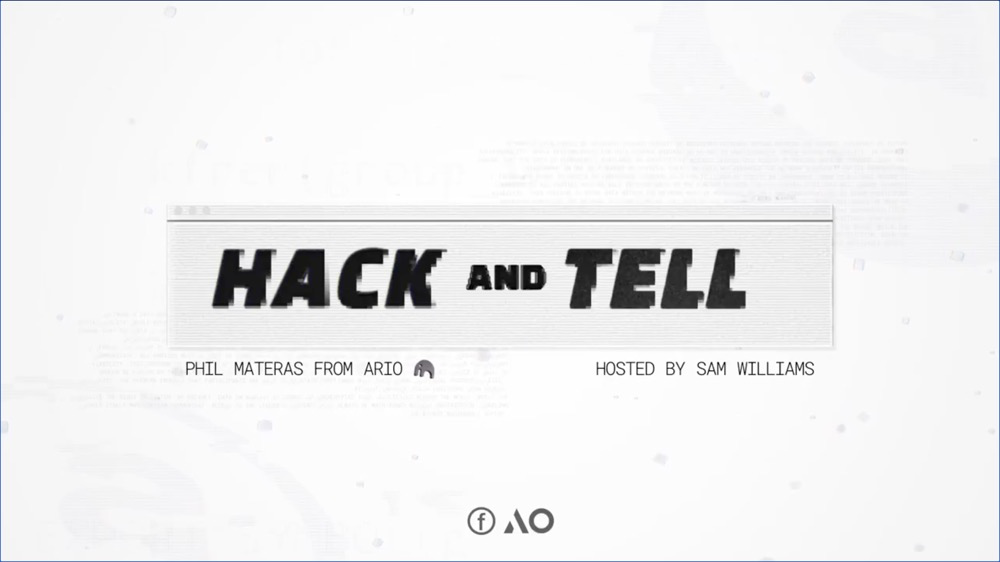
Author: Kyle
Reviewer: Sandy
Source: Content Guild - News
Originally published on: PermaDAO
Original link: https://permadao.notion.site/Hack-and-Tell-Sam-Phil-Mataras-aab51484819041569dd323f0e127f107?pvs=4
In this episode of Hack and Tell, Sam and Phil Mataras (founder of AR.IO) discuss the development and functionality of the AR.IO network. The AR.IO network provides data access and management capabilities through decentralized gateways, and improves the user experience through tools such as ArNS (Arweave Domain Name System) and ArDrive. These innovations are designed to make decentralized storage and applications easier to use, more user-friendly, and achieve high risk resistance on a global scale.
Highlights
Function and positioning of AR.IO network
AR.IO is an access layer built on top of Arweave, providing upload, cache and data indexing services. Phil compared Arweave to a permanent hard drive, and AR.IO is the entry layer for users to access this hard drive.
Phil added that AR.IO solves the access problem of the basic storage layer, allowing users to upload data through any gateway and quickly retrieve data using caching and indexing technology. At the same time, it also introduces user-friendly tools such as ArNS and ArDrive, making it easier for novice users to participate in the Arweave ecosystem.
Arweave’s Permanent Storage Advantage
Arweave’s permanent storage feature gives data an unalterable timestamp and signature record, which Phil describes as “proof of origin of the content,” giving uploaders full ownership.
Sam added that this mechanism makes Arweave superior to traditional content addressing schemes (such as IPFS) in terms of credibility and historical traceability.
ArDrive's user-friendly design
ArDrive simplifies complex blockchain interactions into a "Dropbox-like storage tool." Phil showed how users can upload data and generate a permanent storage link simply by creating a wallet. In order to solve the complexity of users' initial operations, ArDrive supports credit cards to purchase storage quotas without forcing users to own Arweave tokens.
The versatility of ArNS
ArNS provides an easy way to replace hard-to-remember Arweave transaction IDs with human-readable friendly names. Phil explained that ArNS provides friendly name resolution, allowing users to create memorable names for data, applications, or identities, while supporting bidirectional resolution (from name to data or from data to name).
Turbo Credits Introduction
Phil introduced Turbo Credits, a storage points mechanism that users can purchase with a credit card without holding Arweave tokens. He pointed out that this method greatly reduces the threshold for users to use decentralized storage, while optimizing upload efficiency through the bundling mechanism, which is particularly suitable for users who are new to blockchain.
ArNS dynamic pricing model
Phil explained in detail the dynamic pricing model of ArNS, where prices change based on the demand for namespaces. When demand is high, prices go up to avoid namespace squatting; when demand drops, prices go down to stimulate purchases. He pointed out that this mechanism makes the allocation of namespaces fairer and reduces the damage to the ecosystem caused by namespace squatting.
Cross-chain compatibility and encryption key support
AR.IO and Arweave support multiple types of encryption keys, such as Ethereum and Solana wallets, allowing users to use familiar tools to interact with the Arweave network. Phil mentioned that this design makes Arweave more inclusive, reduces the learning cost for users across the ecosystem, and further simplifies the upload process through Turbo's bundling mechanism.
Content version tracking and traceability
Sam emphasized that Arweave is designed to support version control of content. Users can access historical versions of data without worrying that the developer's changes will overwrite the original version. This is crucial for both developers and users, especially when decentralized applications need to be supported for a long time.
The flexibility of multi-gateway architecture
Phil mentioned AR.IO's 200+ gateway architecture, showing that even if a gateway fails, data can still be accessed through other gateways. This risk resistance allows users to not worry about the unavailability of content, while ensuring the global distribution and long-term access to data.
The true meaning of de-platforming
Sam explained that decentralization is not limited to blockchain storage itself, but also includes domain name resolution, front-end hosting and other links. AR.IO's architecture uses a distributed design to minimize centralized dependence at every layer, providing users with real control and data sovereignty.
Friendly application development tools
Phil emphasized the importance of PermaWeb Deploy, a Github Action tool that developers can use to deploy applications directly to Arweave and update the ArNS name at the same time. He demonstrated how ArNS can automatically synchronize the latest application version, making deployment and updates more efficient.
Necessity of protocol standardization
Sam and Phil both mentioned that developers must follow standardized protocols when building PermaWeb applications. Phil specifically mentioned that standardization of data formats ensures that future users and developers can easily understand and use existing data and reduce the risk of version incompatibility.
AR.IO Future Plans
Phil mentioned that AR.IO plans to enhance the user experience through browser extensions, such as directly resolving ArNS names and reducing the complexity of manual operations for users. This move aims to make it easier for users to access permanent storage content while further lowering the technical threshold.
The balance between identity and privacy
Sam put forward the view that "owning a private key is a privilege of the user." He explained that users can prove their identity in a decentralized network through cryptographic signatures without relying on any centralized service.
Phil added that designing easy-to-use interfaces to help users manage their keys is key to ensuring the privilege is widely accepted.
New opportunities in the ecosystem
Sam mentioned the concept of decentralized Vercel, and suggested that developers could build a one-stop hosting and deployment service similar to Vercel for Dapps. The goal of this service is to enable developers to easily deploy and manage decentralized applications based on Arweave.
Phil agreed with this view, noting that Arweave’s infrastructure is fully capable of supporting such services, allowing more developers and users to join the ecosystem.













